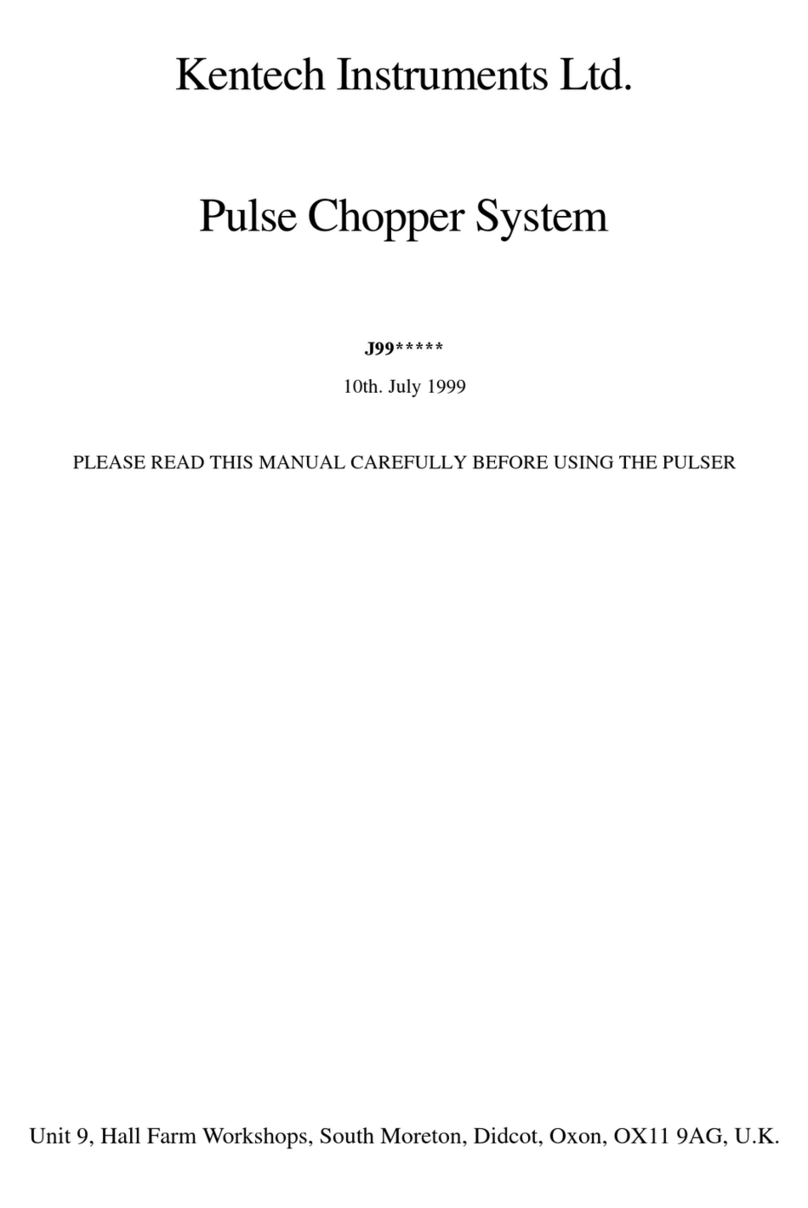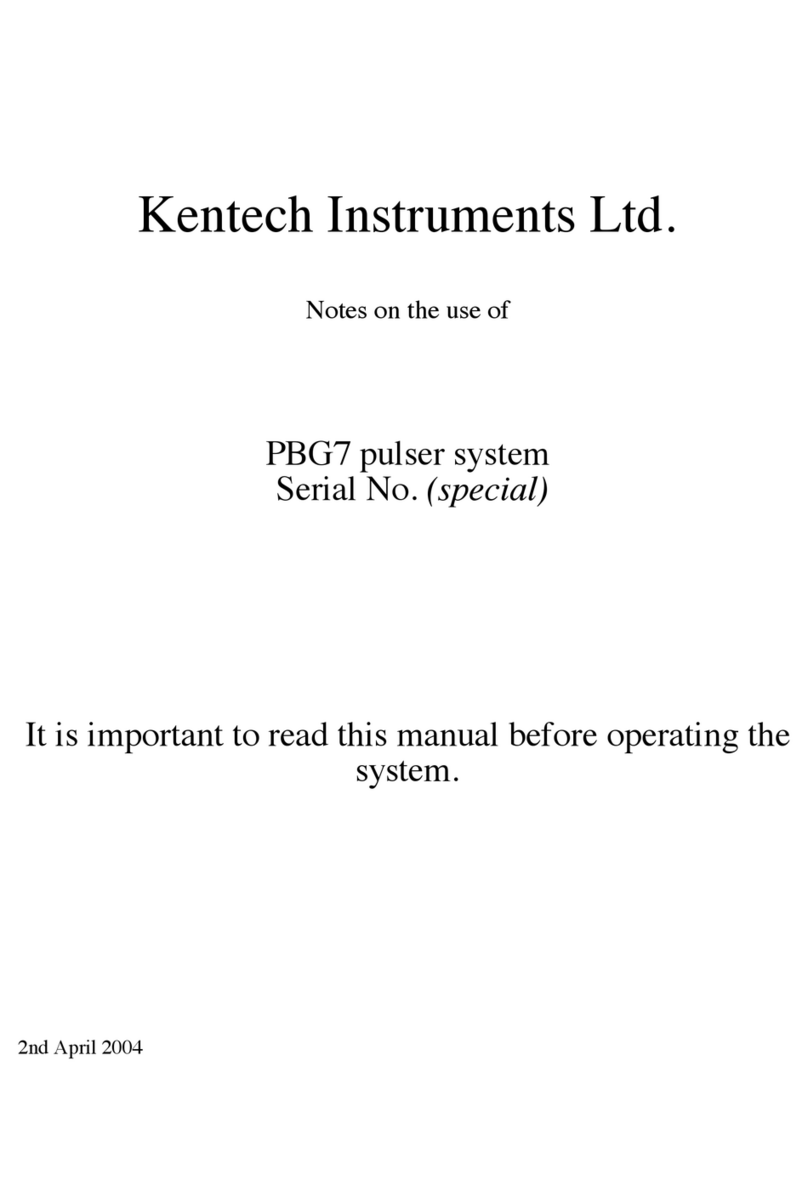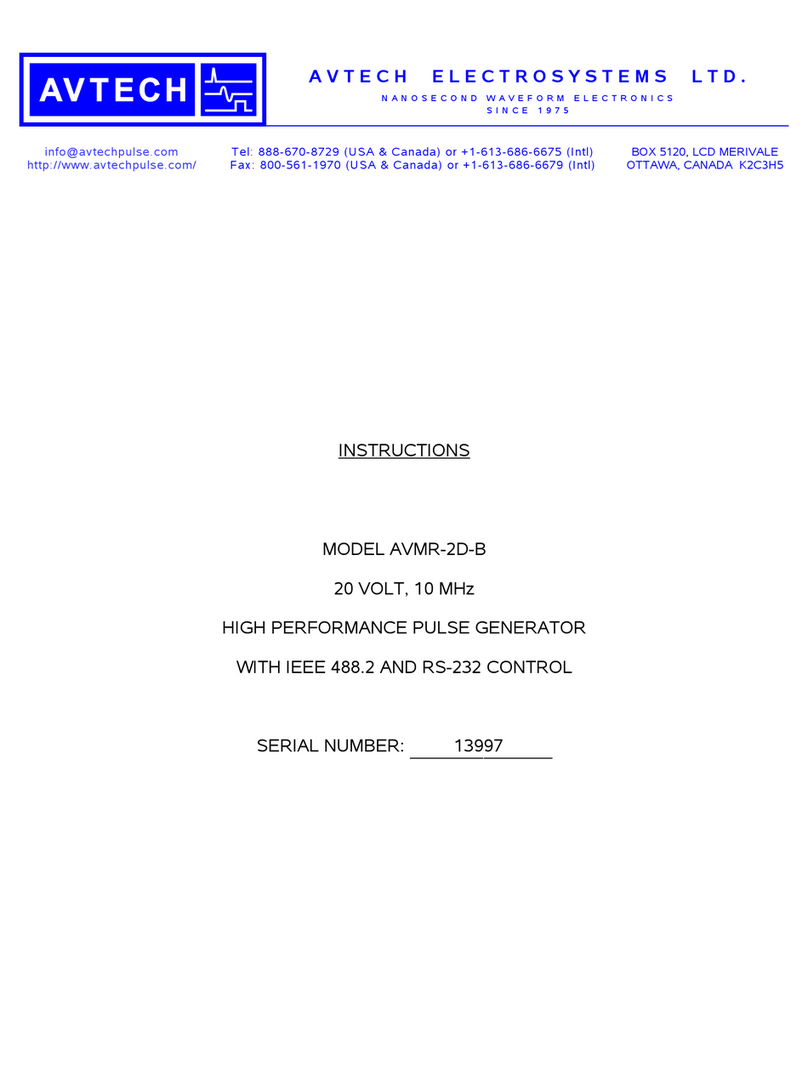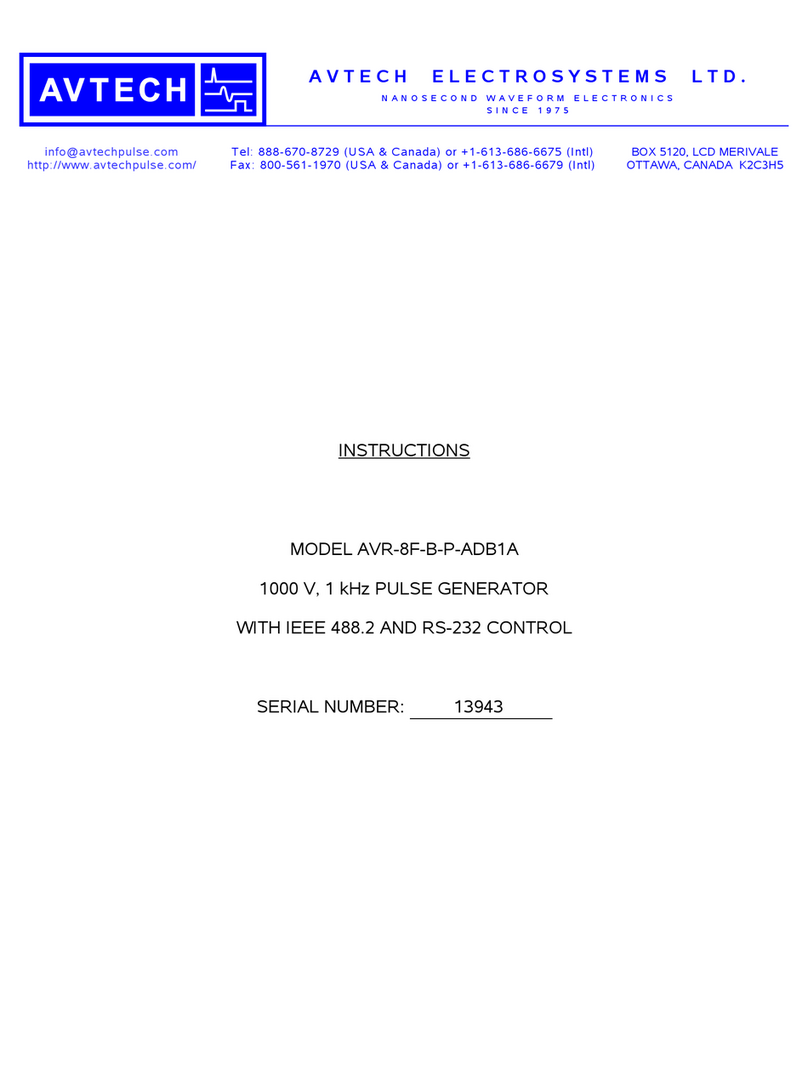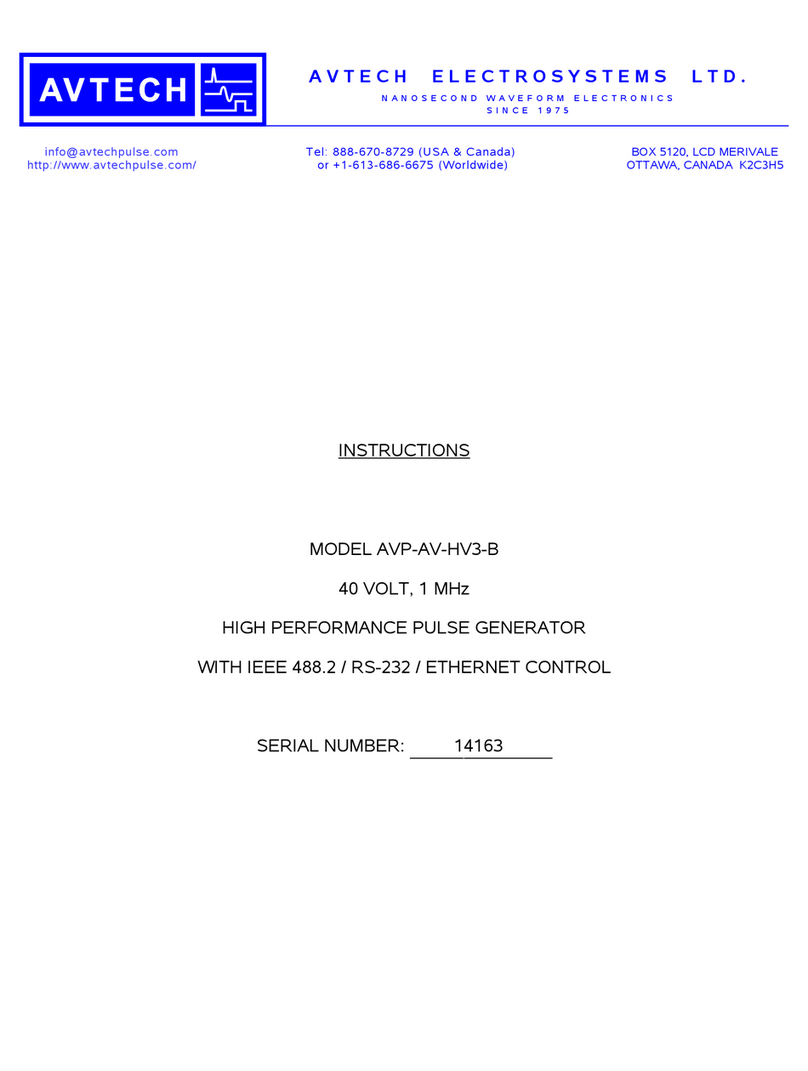Kentech Instruments CPS3-S Operating instructions

Kentech Instruments Ltd.
Notes on the use of
CPS3-S module
s/n J19xxxxx
Last Modified 11-2-20
PLEASE READ THIS MANUAL CAREFULLY BEFORE USING THE UNIT
Kentech Instruments Ltd.,
Isis Building, Howbery Park, Wallingford, Oxfordshire, OX10 8BD, U.K.
Tel: +44 (0) 1491 82 1601

2
Kentech Instruments Ltd., Isis Building, Howbery Park, Wallingford, Oxfordshire, OX10 8BD, U.K.
Last Modied 11-2-20
Contents
1 DECLARATION OF CONFORMITY 3
2 DISCLAIMER 4
3 EMC CAUTION 4
4 ABBREVIATIONS 5
5 CAUTION 5
6 INTRODUCTION 5
7 OPERATION OF THE PULSER 6
7.1 GENERAL OPERATION..............................................................................................................6
7.2 CONNECTIONS ...........................................................................................................................6
7.2.1 FRONT PANEL CONNECTIONS..........................................................................................6
7.2.2 REAR PANEL CONNECTIONS ............................................................................................6
7.2.3 DIMENSIONS AND MOUNTING ........................................................................................7
8 SPECIFICATIONS 9

3
Kentech Instruments Ltd., Isis Building, Howbery Park, Wallingford, Oxfordshire, OX10 8BD, U.K.
Last Modied 11-2-20
1 DECLARATION OF CONFORMITY
Declaration of Conformity
We:- Kentech Instruments Ltd.
The Isis Building
Howbery Park
Wallingford
Oxfordshire OX10 8BD, UK
Certify that this apparatus:-
Kentech CPS3-S Pulse Generator
serial no. J19xxxxx
Conform with the protection requirements of European Community Directives:-
73/23/EEC Low Voltage Directive
89/336/EEC Electromagnetic Compatibility Directive
93/68/EEC CE Marking Directive
The following harmonised standards have been applied:-
BS EN55011 Emissions Specication (Group 2 Class A) Industrial, Scientic and Medical equipment
BS EN50082-2 Generic Immunity Standard
Part 2 Industrial
BS EN 61010-1 Safety Requirements for Electrical Equipment for Measurement, Control, and
Laboratory Use
The following documents contain additional relevant information:-
Kentech le reference J19xxxxx
Signature: Name: A.K.L. Dymoke-Bradshaw
On behalf of Kentech Instruments Ltd.
Position: Director
Issued: 11-2-20

4
Kentech Instruments Ltd., Isis Building, Howbery Park, Wallingford, Oxfordshire, OX10 8BD, U.K.
Last Modied 11-2-20
2 DISCLAIMER
There are high voltage power supplies present in this instrument when the unit is operating. Do not
remove any covers from the unit or expose any part of its circuitry. In the event of malfunction, the
unit must be returned to Kentech Instruments Ltd. or its appointed agent for repair.
The accessible terminals of this instrument are protected from hazardous voltages by basic insulation
and protective grounding via the power input connector. It is essential that the ground terminal of
this connector is connected to the local earth/screened enclosure via the power lead to maintain
this protection.
Kentech Instruments Ltd. accepts no responsibility for any electric shock or injury arising from
use or misuse of this product. It is the responsibility of the user to exercise care and common sense
with this highly versatile equipment.
Read this manual before unpacking and using the instrument. If cleaning is necessary this should
be performed with a soft dry cloth or tissue only.
3 EMC CAUTION
This equipment includes circuits intentionally designed to generate short high energy electromagnetic
pulses and the EM emissions will be sensitive to the details of the experimental set up.
In practice emissions may exceed E55011 and the unit may cause interference with other equipment
in its immediate environment. It is therefore suitable for use only in a laboratory or a sealed
electromagnetic environment, unless it is used in a system that has been veried by the system
builder to comply with EC directive 89/336/EEC. Use of this apparatus outside the laboratory or
sealed electromagnetic environment invalidates conformity with the EMC Directive and could lead
to prosecution.
We believe that with this type of unit it has to be the system builders responsibility to verify that
his pulser/load system complies with the EC directive unless the system is used in a screened
electromagnetic environment.
We are not able to guarantee compliance with arbitrary loads but to minimise emissions we
recommend:-
1) That any load is fully contained within a conductive metal screened box, with all joint surfaces
gasketed or tted with conductive fasteners at less than 5cm intervals.
2) That the load is connected to the pulser output with semi-rigid cable, the cable outer must be
carefully connected to the N type output connector at one end, and must be connected directly to
the screened box containing the load at the point of entry. Flexible cables should only be used with
caution, in particular RG303 type cable will need additional screening to control emissions. The
use of semi rigid cables or conformable semi rigid cables will deliver lower EM radiation from the
cabling than any exible types.
Pockels cells will radiate through the optical windows and if this is an issue the laser system should
be enclosed in a suitable EMC enclosure.

5
Kentech Instruments Ltd., Isis Building, Howbery Park, Wallingford, Oxfordshire, OX10 8BD, U.K.
Last Modied 11-2-20
4 ABBREVIATIONS
EHT or eht Extra High Tension (high voltage)
EMC Electromagentic Compatibility
PRF Pulse Repetition Frequency
PSU or psu power supply unit
SD Standard Deviation
w.r.t. With Respect To
5 CAUTION
With an appropriate load, this unit is safe for use by an educated user in a laboratory
environment. You are warned, however, that the radiation from the system with an antenna or
inappropriate load attached, can damage sensitive equipment and corrupt data stored in computer
and microprocessor based systems. It can cause terminal failure of vital medical electronic
systems, such as pacemakers. This equipment is supplied on the understanding that the user will
analyse these risks, accept responsibility for them, and take appropriate precautions in the use of
this instrument.
The output from this pulse generator will destroy many types of power attenuators and electronic
test equipment. It is the user’s responsibility to ensure that any apparatus connected to the output
is suitably rated.
Kentech Instruments Ltd. accepts no responsibility for any damage or liabilities incurred in the
operation of this equipment.
Please read the manual before applying power.
6 INTRODUCTION
Our range of solid state pulsers (ASG, CPS, HMPS and PBG series) allows very high voltage, fast
rising pulses to be obtained from compact bench top units. Voltage pulses as short as 100ps FWHM,
in excess of 4kV peak voltage into 50Ω, and with a pulse repetition frequency (PRF) >1kHz can
be produced. The performance of our compact, convenient and reliable pulsers is to our knowledge
exceeded only by laser driven photoconductive switches in terms of voltage switching speeds.
These pulsers will nd applications in many elds such as high speed camera research, electro-optic
switching, triggering systems and radar.
A large range of output pulse lengths can be provided by the incorporation of internal passive pulse
forming networks. There is very little jitter in the output of the pulsers and two independent pulsers
can be used in parallel to drive low impedances. This aspect makes the pulsers particularly useful for
driving microchannel plate systems. Transformers with output impedances as low as 5 are available.
The standard drivers have a life of >1010 pulses.
The pulsers can feed into a short circuit load without damage. This allows them to be used in sub-
nanosecond pulse chopping systems by feeding through a pockels cell into a shorting stub. Variations
on the standard driver are available.

6
Kentech Instruments Ltd., Isis Building, Howbery Park, Wallingford, Oxfordshire, OX10 8BD, U.K.
Last Modied 11-2-20
7 OPERATION OF THE PULSER
7.1 GENERAL OPERATION
The pulser requires 12 volts D.C. power and a trigger signal to operate. The trigger signal applied
to the rear panel trigger input (BNC) should be 5V into 50Ω with a fast rising edge (<5ns) to
maintain the low jitter of the system. When triggered the triggered light on the rear panel will
ash.
The output of the unit is a nominal 3.6kV positive pulse which appears at the output front panel
connector (N type). The pulse width is xed at ~4ns.
If it is necessary to monitor or characterise the pulse output then suitable attenuators should be
used.
Note that the supply voltage should be 12 volts at the input to the unit. If long power leads are
used these may cause enough voltage drop to reduce the voltage at the pulser to < 12 volts. A
slightly higher supply should then be used. If the unit is operated at less than about 11.9 volts the
output amplitude may be reduced and the trigger delay increased.
Also note that the unit is tted with a 13 volt zener diode which will protect the input against too
high a voltage for a limited time. Do not leave more than 13 volts on the unit for an extended
time or the zener diode might fail.
For future units we are considering a built in voltage regulator and more protection to improve
the tolerance to the wrong input voltage.
CAUTION
The output of this unit will damage or destroy many types of high voltage and high power
attenuators. We only recommend the use of a high voltage, high speed attenuator manufactured
by Barth™ as the rst in a series. Consult the attenuator manufacturer before using any other
conguration.
The output may be observed with a high bandwidth oscilloscope. This may either be a fast
(>3GHz) direct access type or a sampling type.
The trigger delay from trigger input BNC to main output is approximately 20ns. The jitter is
~20ps peak to peak with a suitably reproducible and fast rising trigger signal.

7
Kentech Instruments Ltd., Isis Building, Howbery Park, Wallingford, Oxfordshire, OX10 8BD, U.K.
Last Modied 11-2-20
7.2 CONNECTIONS
7.2.1 FRONT PANEL CONNECTIONS
This is an “N” type jack. It is important to keep the insulator clean. Light lubrication of the thread
will stop metal particles from being generated.
7.2.2 REAR PANEL CONNECTIONS
The rear panel has two inputs, a Lemo 00 socket for power and a BNC jack for the trigger. A ying
lead for the Lemo socket is supplied.

8
Kentech Instruments Ltd., Isis Building, Howbery Park, Wallingford, Oxfordshire, OX10 8BD, U.K.
Last Modied 11-2-20
3rd Angle
C Kentech 2018
259
164
4
1.6
41.3
82.1
17.6
81.9
32.75
19.75
23.6
11.6
155
5.2
BS EN 22768 mK1 of 3
MATERIAL / SPECSURFACE TEXTURETOLERANCESHEET
REMOVE ALL BURRSmm /A3
FINISHQTY (PER SET)DIMS / SCALEPAPER
0030-0256 Special CPS3 for Lutronic Corp.
USED ON
ASM-0256-012-MAIN
TITLE
Kentech Instruments Ltd, Isis Building, Howbery Park, Wallingford, Oxfordshire, OX10 8BD, UK
MODIFICATIONDRAWNDATEREV
AKLDB12-Jun-18
DRAWING NUMBER
ASM-0256-012-MAIN
screws not shown
1.000SCALE
1.000SCALE
1.000SCALE
7.2.3 DIMENSIONS AND MOUNTING
There are four mount holes on the base plate, see below.

9
Kentech Instruments Ltd., Isis Building, Howbery Park, Wallingford, Oxfordshire, OX10 8BD, U.K.
Last Modied 11-2-20
3rd Angle
C Kentech 2018
269
154
5
5
3.1
BS EN 22768 mK2 of 3
MATERIAL / SPECSURFACE TEXTURETOLERANCESHEET
REMOVE ALL BURRSmm /A3
FINISHQTY (PER SET)DIMS / SCALEPAPER
USED ON
ASM-0256-012-MAIN
TITLE
Kentech Instruments Ltd, Isis Building, Howbery Park, Wallingford, Oxfordshire, OX10 8BD, UK
MODIFICATIONDRAWNDATEREV
AKLDB12-Jun-18
DRAWING NUMBER
ASM-0256-012-MAIN
1.000SCALE

10
Kentech Instruments Ltd., Isis Building, Howbery Park, Wallingford, Oxfordshire, OX10 8BD, U.K.
Last Modied 11-2-20
8 SPECIFICATIONS
These are general specications. Data on individual units is available on the CD that accompanies
this manual.
Output voltage ~3.6kV maximum into 50Ω.
Output polarity Positive.
Pulse shape Rectangular.
Pulse width 4.3 ns
Rise time ~250ps
Fall time ~800ps
Trigger 2.5V into 50Ω, <5ns rise time1
Jitter <20ps peak to peak, 3.4ps SD measured.
Trigger delay nominally 20.5ns (BNC trigger input to main output).
Maximum repetition rate ≥30Hz.
Power supply 12 Volts DC @ >0.4 A
Maximum power <7W
Outputs:
Pulse output N type 3.6kV pulse.
Inputs:
Trigger input BNC (jack) 5V into 50Ω, <5ns rise time.
Power Lemo ERA.00.250.CTL
Mating plug FFA.00.250.CTA.C33
Indicators:
Power Shows that DC power is applied.
Triggered Illuminates while the unit is being triggered.
Environmental:
Ambient temperature 5 to 35°C
Humidity < 95% non-condensing
Altitude < 300 m
Dimensions Pulser: W164 x L290 x H42 mm3
(over connectors)
Weight: Pulser: 0.83kg
1 From J1904241 units are tted with an adjustable trigger threshold. This has been preset to 1.25volts, i.e.
half the trigger requirement of 2.5 volts into 50Ω.

11
Kentech Instruments Ltd., Isis Building, Howbery Park, Wallingford, Oxfordshire, OX10 8BD, U.K.
Last Modied 11-2-20
Figure 1 Pulse shape ~ 4ns

12
Kentech Instruments Ltd., Isis Building, Howbery Park, Wallingford, Oxfordshire, OX10 8BD, U.K.
Last Modied 11-2-20
Figure 2 Jitter ~ 5ps SD

13
Kentech Instruments Ltd., Isis Building, Howbery Park, Wallingford, Oxfordshire, OX10 8BD, U.K.
Last Modied 11-2-20
Figure 3 Trigger delay ~ 19ns
Table of contents
Other Kentech Instruments Pulse Generator manuals
Popular Pulse Generator manuals by other brands
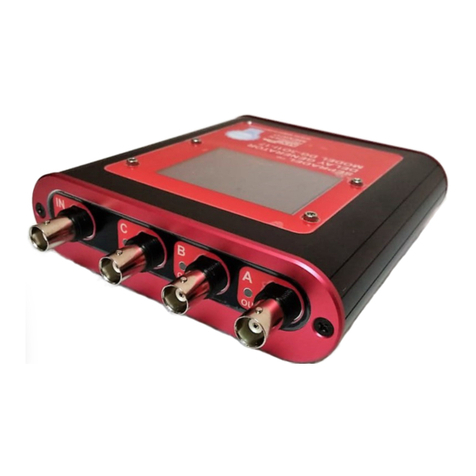
Sepradel
Sepradel DG-3O1I-17 user manual

Stanford Research Systems
Stanford Research Systems DG535 Operation and service manual

Agilent Technologies
Agilent Technologies 81104A quick start guide
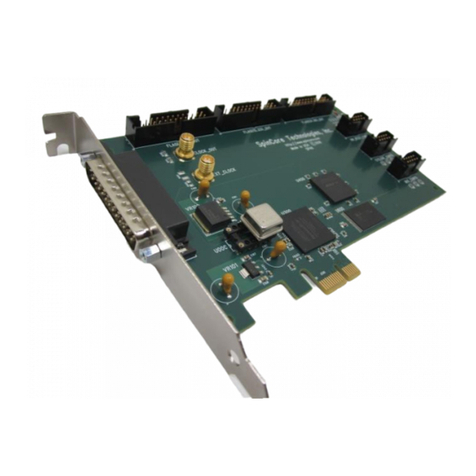
SpinCore Technologies
SpinCore Technologies PulseBlaster owner's manual
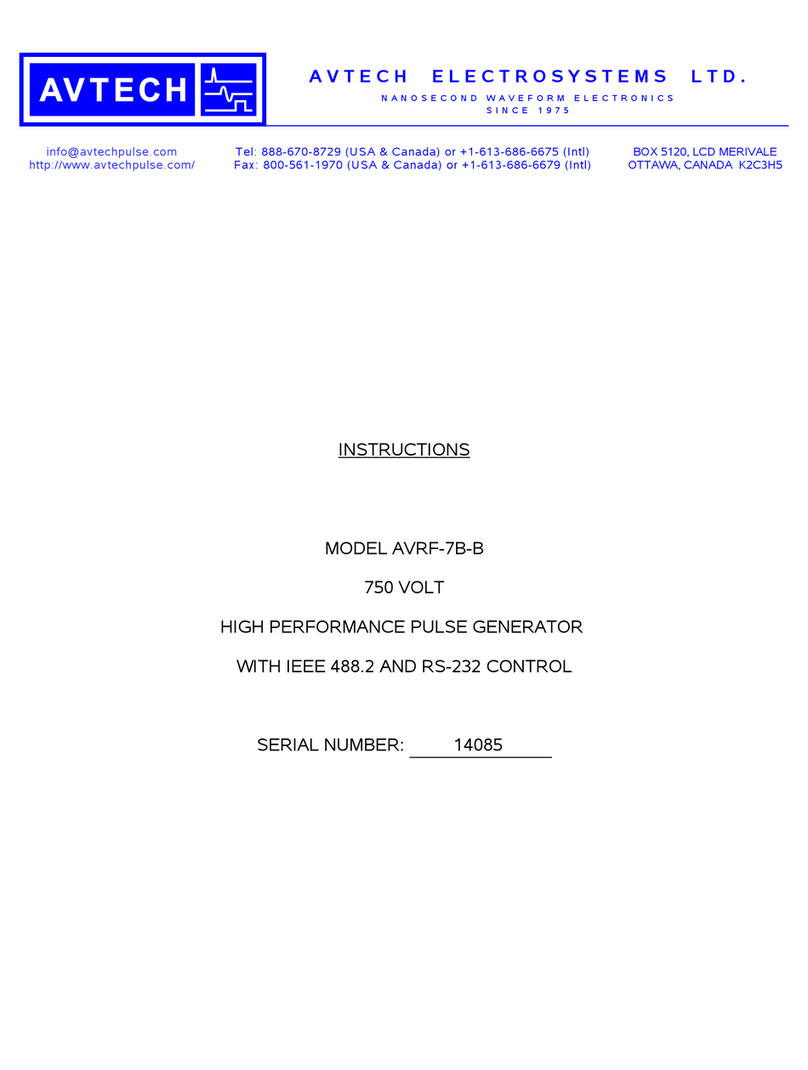
Avtech
Avtech AVRF-7B-B instructions
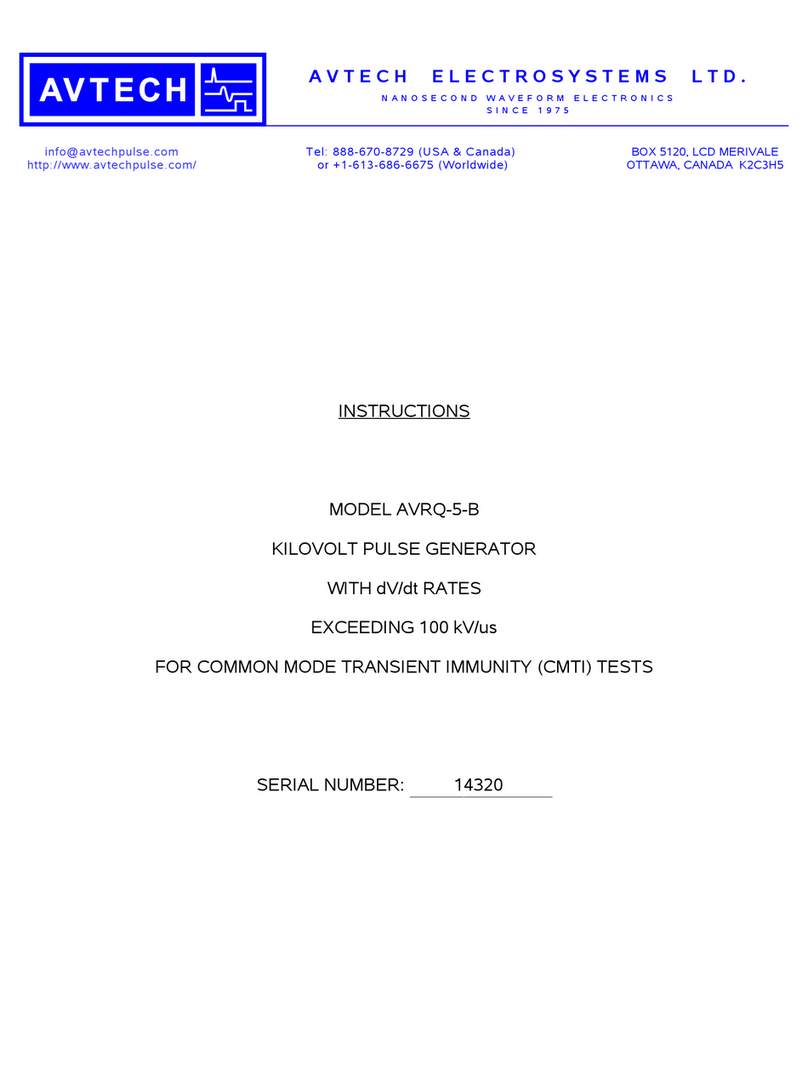
AVTECH ELECTROSYSTEMS LTD.
AVTECH ELECTROSYSTEMS LTD. AVRQ-5-B instructions
